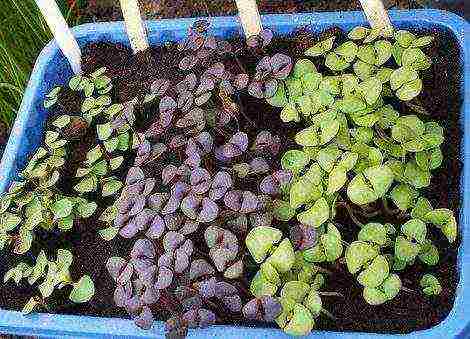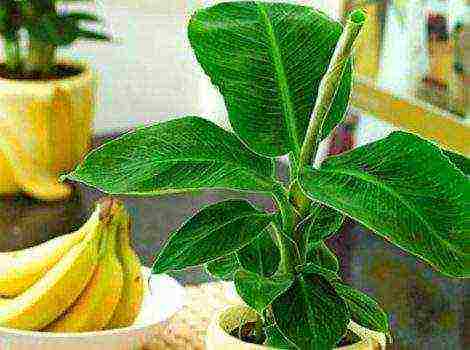Content [show]
2 parts: Planting a peony in a potPeony care
Peonies are hardy plants from zones 3-8. However, they perform at their best in regions where the weather is slightly cold in winter. In zones 8 and 9, these plants may not flower if the temperature stays warmer than they like during the “colder” periods of the year. It is relatively easy to grow peonies in a pot.
Part 1 Planting a peony in a pot
-
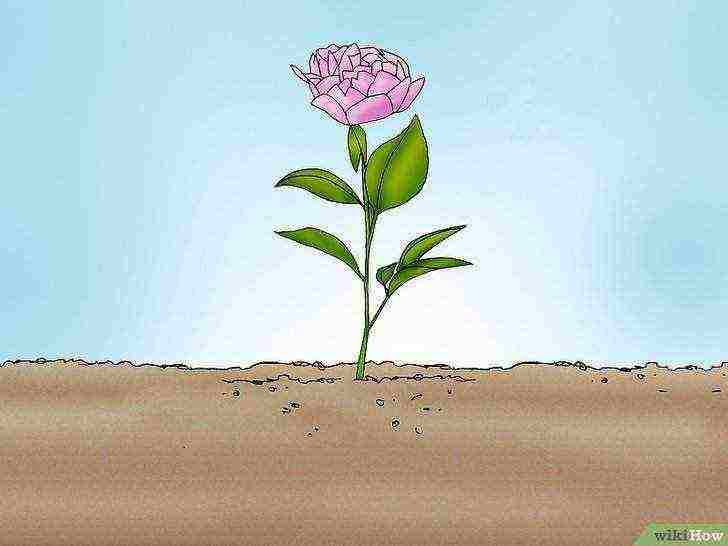 Choose a peony that will fit the pot.
Choose a peony that will fit the pot.
Peonies (Paeonia spp. And hybrids) are usually grown outdoors, but they can also be grown in a pot. Choose a variety that, by nature, remains smaller.
- Some peonies such as "Zhao Fen" (Tree peony "Zhao Fen" or "Zhao Pink") can grow to a height of 0.9 m to 1.8 m and a width of 0.6 m to 1.2 m.
- Two smaller, more suitable variants of "Zhu Sha Pan" (Peony "Zhu Sha Pan" or "Kinnabar Red"), which grows in height and width from 0.6 m to 0.75 m, and "Narrow-leaved Peony" (Paeonia tenuifolia), which grows only 0.3 - 0.6 meters in height and 22 to 49 cm in width.
-
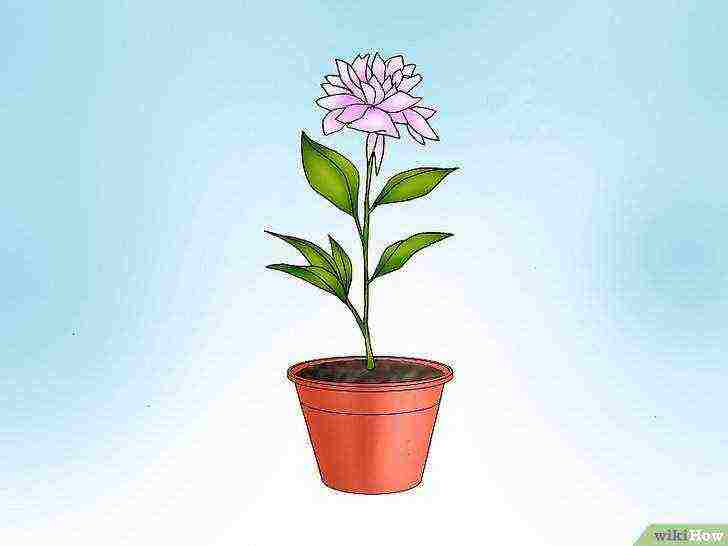 Choose the right pot for your peony.
Choose the right pot for your peony.
Pot the peony in early spring. Place it in a container that is at least 30 cm in diameter and 45-60 cm deep to give the peony plenty of room to grow.
- Larger varieties will require an even larger pot. The container should also have several drainage holes at the bottom.
- Growers should also note that these plants do not respond well to transplanting and must start their lives in large containers. Thus, a 5 liter pot is ideal for peonies.
-
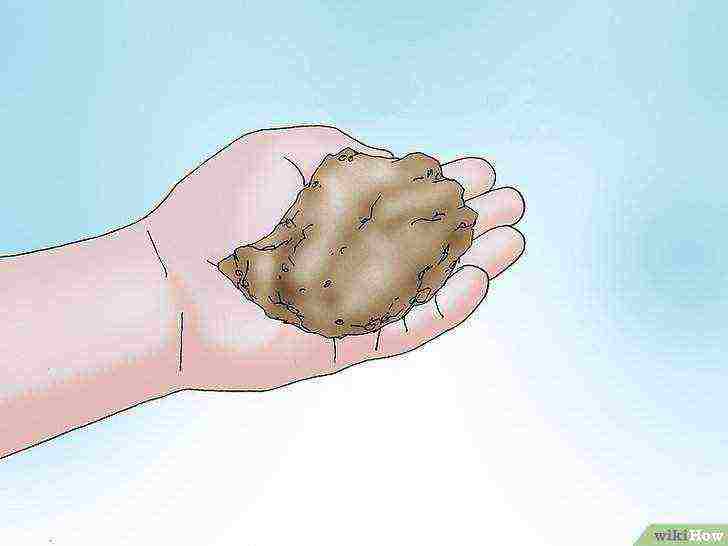 Fill the container so it is half full with peat potting soil.
Fill the container so it is half full with peat potting soil.
Place the tuber on top of the potting mix to check the depth. There should be no more than 2.5-5 cm of soil above the top of the tuber.
- When the potting mix is at the correct depth, mix the water with it until the mixture is wet.
-
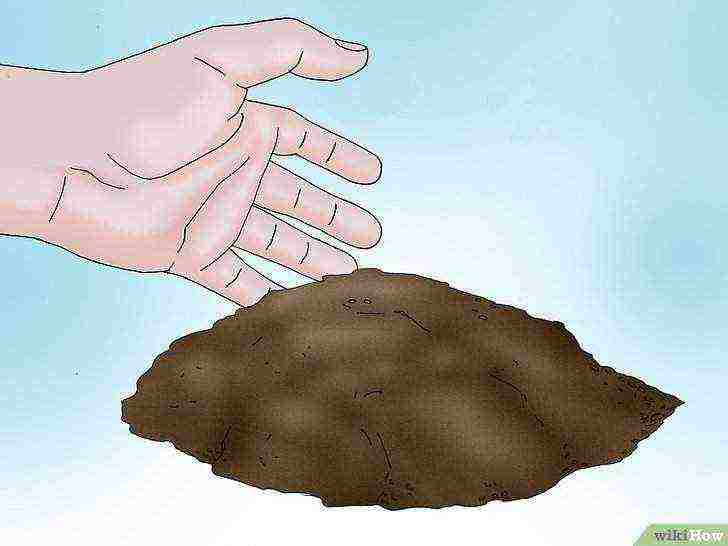 Add compost to the soil.
Add compost to the soil.
Before planting a peony bulb, it is a good idea to sprinkle the compost in the soil for additional nutrients.
- In spring, peonies are also advised to add a small amount of slow release fertilizer with low nitrogen content.
- This will help keep them healthy and encourage flowering, but will not burn the plants like other types of fertilizers.
-
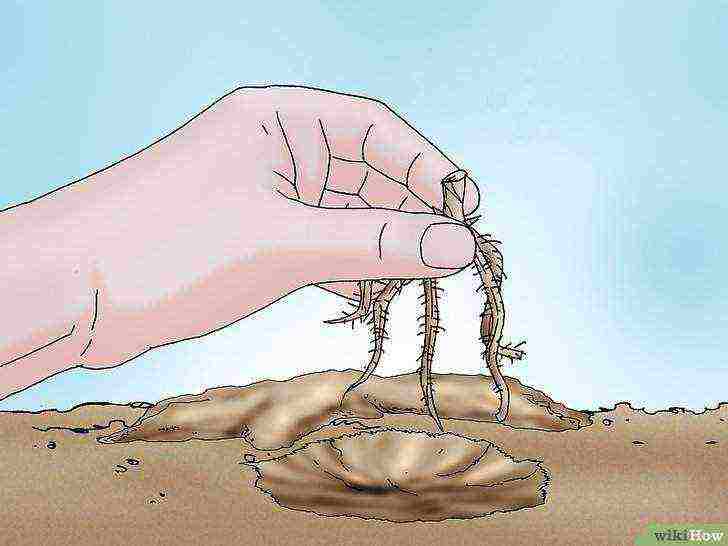 Place the peony tuber on top of the wet mixture with "eyes" or buds growing upwards.
Place the peony tuber on top of the wet mixture with "eyes" or buds growing upwards.
Finish filling the pot with potting soil and pour over until the water runs out from the bottom. Peony bulbs should be covered with only 2.5-5 cm of soil.
- Gardeners need to be careful in such cases, because peonies that are too deep will not bloom.
- Instances that produce lush foliage but not flowers may need to be dug up and transplanted to the correct depth before they can produce flowers.
Part 2 Peony care
-
 Give the peony the light it loves.
Give the peony the light it loves.
Set up the container outdoors in a sheltered place where the peony will get at least six to eight hours of direct sunlight.Peonies require a lot of light to grow and color.
- If the peony will be grown indoors, place it in front of the south or west side of a window, where it will receive plenty of direct sunlight.
-
 Use grow lamps in addition to natural light.
Use grow lamps in addition to natural light.
Grow lights are essential to supplement natural light. Use a 4-lamp fluorescent light fixture with two dedicated 40-watt full-spectrum fluorescent lamps and two 40-watt cool white lamps.
- Adjust the device so that the lamps are 15 cm higher than the peony and leave it for 12-14 hours every day.
- The lamp must be connected to a timer that turns it on in the morning at sunrise and turns it off at the end of the day.
-

Water the peony. Water the peony when the top 2.5 cm of potting mix is dry. Pour the water evenly over the potting mix until the water runs off the bottom of the pot.
-
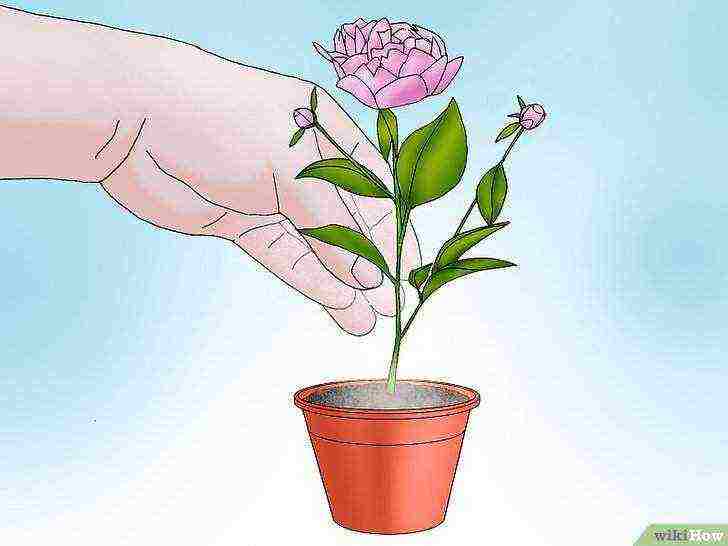 Feed your peony with houseplant fertilizer.
Feed your peony with houseplant fertilizer.
When the peony has new stems, start giving it houseplant fertilizer every four weeks.
- It is important to use fertilizer for indoor plants, as opposed to fertilizer for garden-grown peonies, as it is grown in a container.
- Water soluble fertilizer is best. Always fertilize after regular watering. Stop feeding around mid-summer.
-
 Prepare the plant for a dormant period.
Prepare the plant for a dormant period.
In late summer, water the peony less often. Let the soil dry completely before watering it again to encourage the peony to retire for the winter. Peonies should have two to three months of rest.
- If the peony is grown indoors, slowly reduce the additional hours of light to coincide with the short autumn days.
- If the peony is outdoors, leave it until the first bitter frost.
-
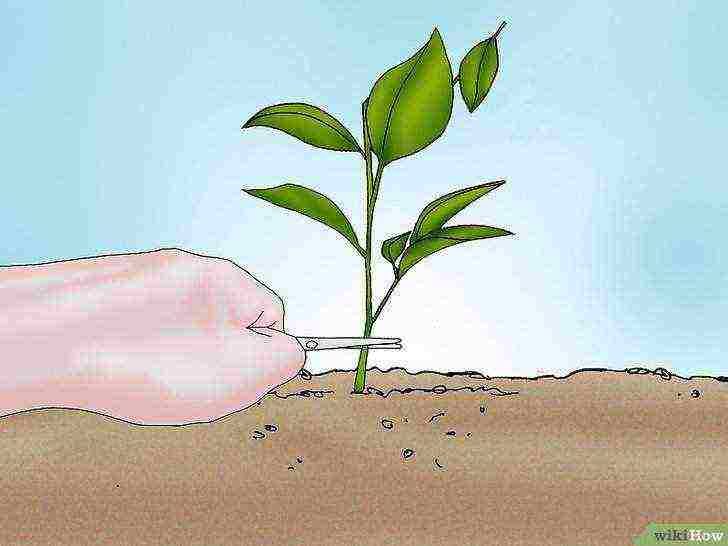 Trim the stems and move the plant to a cool, dark place.
Trim the stems and move the plant to a cool, dark place.
When the leaves begin to turn yellow and die, use a hand pruner to cut the stems.
- Place the pot in an unheated garage or cool place in your basement. Take it out again in the spring when it gets warmer.
- Place it outdoors in a sunny location or in front of a window and water abundantly.
Advice
- Peonies tend to bloom more profusely after they reach full maturity at 3 years of age.
- Those who grow peonies should avoid watering the plant heads because it can encourage disease and other pests to take hold.
Article Information
This page has been viewed 47,073 times.
Was this helpful?
Peonies are very beautiful and fragrant flowers. They are often found in garden beds. And if you are wondering whether it is possible to grow peonies in a pot, we answer: you can. To do this, you need to know the features of home cultivation of these beautiful plants.
Home cultivars
First of all, it is worth deciding which varieties can be grown in an apartment or house. The fact is that the peony is a rather tall and voluminous bush that is unlikely to fit in an ordinary flower pot. And it is very difficult to grow such a plant in an apartment. Therefore, flower growers recommend choosing special varieties for home growing.
Garden varieties form bushes with a height of about 60–120 cm. Therefore, they are not suitable for an apartment, as they require a lot of space, large pots and special care. For home conditions, stunted species (patio peonies) that do not grow taller than 50 cm are best suited.
Patio species form slightly smaller buds than normal garden varieties. The color of flowers can be very diverse: from white to rich or maroon. However, despite their small size, their flowers exude a pleasant aroma.Due to the small size of the plants, their root system is small and fits easily into a flower pot.
It is best to plant the following varieties of peonies in an apartment:
- Rome. Forms pink buds. Has an average flowering period;
- Moscow. The plant blooms with red double flowers. This is a mid-early variety;
- Oslo. Raspberry buds of a simple type are formed on the bush. Very early flowering variety;
- London. Differs in early flowering period. The buds are terry and painted in burgundy color.
Such species on the windowsill can be grown with little effort and time.
Video "How to prepare a peony for planting"
This video will show you how to properly prepare peonies for planting.
The necessary conditions
To grow strong and healthy indoor peonies, it is necessary to organize optimal conditions for them. If the plant was planted under inappropriate conditions, then the emerging shoots will be lethargic and weak, and flowering will not occur at all.
When growing peonies at home, three main conditions must be observed:
- a spacious pot for the normal development of the root system;
- correct water regime and feeding (the intake of minerals is especially important);
- optimal light mode - at least 12 hours of illumination per day.
A pot for a peony should be chosen with a volume of at least 5 liters, with a diameter of about 30 cm. The depth of the container should be greater than the diameter and not less than 50 cm. Instead of a pot, you can plant flowers in wooden overall boxes, which are lined with thick fabric.
Regardless of its type, the selected container at the bottom must have drainage holes. Excess moisture will be removed through them.
For better survival, experts advise planting rhizomes in a flower pot at the age of 2-3 years. If the planting was correct and all the conditions of detention were met, then the plant will bloom in a few months.
Planting instructions
Indoor peony should be planted in a pot in the spring. The landing itself is performed as follows:
- A drainage layer must be laid on the bottom of the selected container. You can use large pebbles, broken brick or perlite. Sand is poured over the drainage.
- Next, the pot (up to half the volume) is filled with a mixture of peat and garden soil. This layer should be well moistened with water.
- The rhizome of the plant is set on top of the soil layer (the soil should look up). You need to work very carefully so as not to damage the underground part of the flower. It should be noted that the rhizome should be placed close to the surface and not buried more than 2-3 cm. Otherwise, the peony will not grow.
- After that, the remaining volume of the container is filled with soil mixture.
- Then compost can be added to the pot so that the flower has all the necessary nutrients for its growth and development. After that, watering is performed.
This plant does not tolerate transfer to another pot. Therefore, it should be planted immediately in a large container in order to minimize the frequency of replanting.
Further care of the flower
After planting a peony, so that it takes root in a new place as quickly as possible and grows, you need to organize correct and balanced care for it.
The planted flower should be placed on an unshaded light windowsill. The light must fall on the peony for at least 12 hours in a row. If there is not enough light, it is necessary to install additional illumination, organized using fluorescent lamps.
Indoors, the pot is recommended to be placed on the windowsill of windows facing the southeast and south sides. In this case, the flower should be protected from drafts. You can even put a container with a plant on a glazed balcony, terrace or loggia.
Watering the plant is done regularly. Water should be added after the top layer of earth (2 cm thick) is completely dry. At the end of summer, watering is reduced to allow the flower to smoothly transition to a dormant state.At the same time, the lighting period should be gradually reduced, as well as the room temperature should be lowered.
Additional spraying of the peony is not carried out. It also does not need high humidity in the room. However, it is forbidden to put a flower pot near heating appliances.
In the process of growth, the peony should be periodically fed, since this plant consumes a lot of nutrients, which leads to a rapid depletion of reserves of mineral components in the soil. Top dressing is carried out in three stages:
- after the formation of the first stems, nitrogen-potassium fertilizers must be added to the container. They will stimulate the peony to grow shoots;
- during budding, fertilizing with potassium, phosphorus and nitrogen is performed. These substances will allow the flower to form large buds;
- 14 days after the beginning of flowering, phosphorus and potassium are reintroduced, which will allow the plant to recover after the budding period.
Each season, the fertilizing cycle is repeated.
Possible difficulties
Low-growing varieties of peonies, like the taller varieties, are quite difficult to grow at home. Therefore, it is not surprising that many growers are faced with the following difficulties:
- formation of sluggish bushes and lack of flowering. The problem lies in the lack of lighting of the flower. It is solved by installing additional lighting equipment;
- in the spring, the peony is in no hurry to grow actively. To solve the problem, dressings with a low nitrogen content are introduced into the pot;
- after planting, the plant does not form new stems or, on the contrary, actively grows green mass, but does not bloom. Most likely, the rhizome is too deeply planted and should be transplanted;
- it is necessary to avoid watering the plant heads, otherwise pathogens and parasites will appear in the pot.
Based on the above recommendations, it becomes clear how to grow low-growing peonies at home in an ordinary flower pot. There is nothing difficult here, you just need to adhere to certain rules.
It is quite easy to grow peonies on your site in a summer cottage village, despite the necessary skill and knowledge. These flowers are one of the favorites of gardeners. Despite its popularity, few people imagine how to grow peonies at home, which land to use for this and which pot it is desirable to choose for future beauty. Peonies at home are a great alternative to flower beds and flower beds that take up a lot of space.
It is quite easy to grow peonies on your site in a summer cottage village, despite the necessary skill and knowledge. These flowers are one of the favorites of gardeners. Despite its popularity, few people imagine how to grow peonies at home, which land to use for this and which pot it is desirable to choose for future beauty. Peonies at home are a great alternative to flower beds and flower beds that take up a lot of space.
What are peonies?
Peonies cultivation and care in the garden
Peony (lat.Paeonia) is a representative of herbaceous perennials of the Peony family. The culture is decorative, used to decorate the garden. Growing peonies in the country and in the garden is popular, since caring for them is not difficult, and some varieties of shrubs can delight you up to 50 years.
Reproduction of peonies
The culture is propagated by dividing the bush, both green and root cuttings, layering, and even seeds.
Seed propagation
This method is more often used by breeders, since the plants obtained from seeds do not have the varietal characteristics of the parents. Seed collection begins in August and ends in mid-September.
Reproduction peony - collecting seeds in August
They are immediately sown into the ground, deepening by 5 cm.Thus, the seeds go through 2 stages of stratification:
- warm - when the daytime temperature rises to 30 degrees Celsius, and at night drops to 15;
- cold - for 2 months the seeds are affected by a cold temperature of 5-10 degrees Celsius.
This technology guarantees a high probability of germination, but some seeds will germinate only for 2 years.
The acquired planting material has a dried up hard shell, which greatly complicates germination. Before sowing, it is necessary to soak the seeds in warm water for 2 days, then sow in September-August using the above technology.
Peonies - propagation by root cuttings with a bud
Harvesting of root cuttings begins at the end of flowering - at the end of June:
- choose a young shoot with adventitious roots and a replacement bud;
- the stalk is cut off with a sharp knife, and the top is shortened, leaving a few leaves;
- the root is placed in a growth stimulator for 12-14 hours;
- the cutting is planted in a shaded place, deepening by 10 cm.
Peonies propagated by root cuttings
By about September, it will take root, and before wintering it will need to be cut off, and the rhizome with a replacement bud should be covered for wintering. Reproduction of peonies by cuttings is a long process, the first flowering will occur only in the 5th year.
Propagation of peonies by stem cuttings
It is necessary to harvest a large number of cuttings, since not all will take root. Cutting is carried out a week before flowering:
- choose bushes 5-7 years old;
- the selected internal shoots (inside the bush) are cut at the root;
- then they are cut by cutting so that there are 2 internodes on each segment (one cut is made under the leaf itself, and the second is made 2-3 cm above the top sheet);
- the cuttings are soaked in a root stimulant solution for 8 hours;
- planted in the shade of trees: the bed filled with compost is sprinkled with a layer of sand, the cuttings are deepened by 3 cm at an angle, at a distance of 0.15 m from each other;
- the landing is covered with a portable greenhouse;
- plants need high humidity, therefore, abundant spraying is carried out 2-3 times a day;
- after 3 weeks, they begin to ventilate the greenhouse, increasing the time every day;
- in late autumn, rooted cuttings are cut, and the rhizomes are covered for the winter.
Propagation of peonies by stem cuttings
Reproduction of peonies by vertical layers
In early April, the base of a 5 year old bush is dug out, exposing the vegetative buds. The bush is covered with a box of 0.5 by 0.5 m without a bottom, and covered with fertile soil 0.2-0.3 m in height. The soil in the box must always be moist. The buds developing on the shoots must be pinched, then the plant gives off strength to the development of the root system.
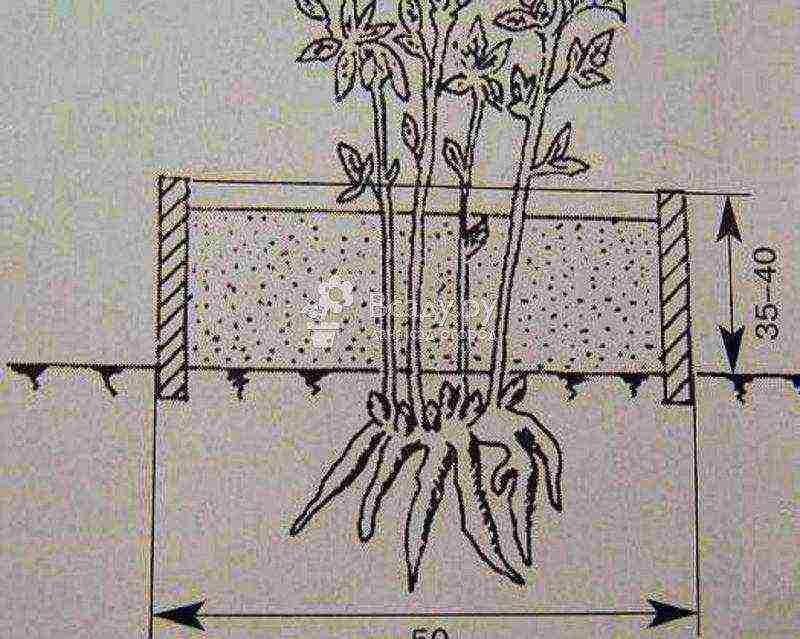 Peony propagation scheme with vertical layering
Peony propagation scheme with vertical layering
At the end of summer, shoots can be cut off, and the resulting roots with new vegetative buds can be separated and planted in a permanent place.
Mandatory transplantation and reproduction of peonies by dividing the bush
Reproduction by division is suitable for bushes that have reached 5-7 years of age. The procedure is carried out from August 15 to September 15. For this:
- the bushes are dug up, washed with water, and left in the shade for a while (dried roots become elastic and do not break);
- all shoots are cut 10-15 cm from the root;
- the rhizome is divided into parts so that each of them contains 3 or more renewal buds;
- the delenki are soaked in a solution of potassium permanganate for 2-3 hours;
- diseased and growing roots are removed, and the sections are treated with ointment from ash and clay;
- then the delenki are planted in new places, before frost they will have time to take root.
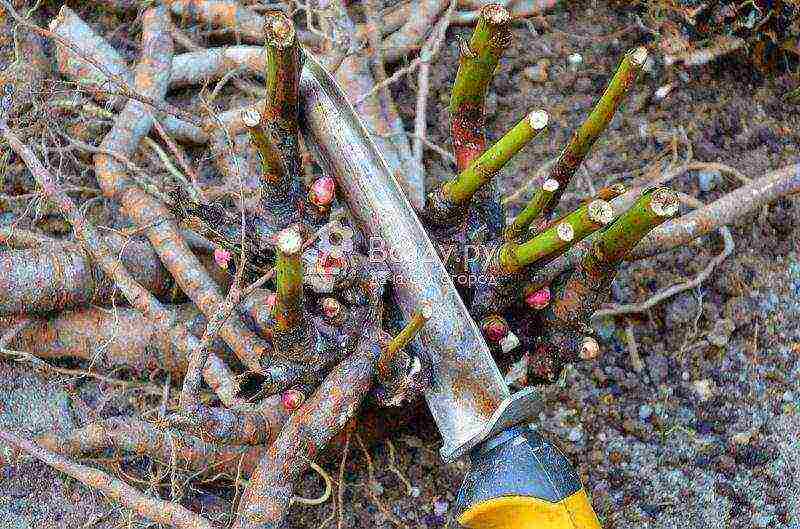 The transplant of peonies is combined with dividing the bush for rejuvenation and reproduction
The transplant of peonies is combined with dividing the bush for rejuvenation and reproduction
It is necessary to divide and transplant peonies, growing and caring for them in the garden according to all the rules, every 5-7 years. This promotes plant rejuvenation.
Reproduction of peonies by dividing the bush
The root collar of adult bushes (over 10 years old) grows old and becomes hollow, ants, worms and slugs settle in it. And vegetative buds are laid deeper over time, which negatively affects flowering.
Reproduction of peonies by dividing the bush video
Site preparation and planting of peonies
Peonies are unpretentious to the soil, the most suitable option is clean loamy soil.A closely spaced layer of groundwater is undesirable; in such cases, an artificial embankment with good drainage will be needed for cultivation. The place should be sunny or slightly shaded. The nearest neighbors should be several meters away from the planting.
A week before planting, pits for peonies should be prepared, cultivation from ready-made seedlings is carried out only in the fall - in September. The required size of the recesses: 60x60x60 cm, and the distance between them: 1 m. The bottom layer is filled with drainage from broken bricks (0.2 m). The next layer consists of compost and mineral fertilizers.
Peony planting scheme
A week later, when the soil settles, the seedlings are placed in planting holes and sprinkled with garden soil. In this case, vegetative buds should be no deeper than 5 cm from the surface. Deep-planted shrubs do not bloom.
Caring for peonies in the garden
From early spring, it is necessary to often water the peony, growing and caring for it implies the presence of moisture, but not an excess. For watering, use 2-3 buckets of water for an adult bush. Loosening and weeding are required.
Fertilizing peonies
Peonies are fed in 3 stages:
- as soon as the snow melted: 10 g of nitrogen and potassium are scattered around the bush and watered;
- during the budding period: 10 g of nitrogen, 12 g of potassium, 15 g of phosphorus (add in the same way);
- 2 weeks after flowering: 12 g of potassium, 20 g of phosphorus under 1 bush.
Diseases and pests of peonies
In early spring, peony bushes can be damaged by diseases such as gray rot (Latin Botrytis cinerea) and powdery mildew (Latin Oidium). Both for prophylaxis and for treatment - it is enough to treat the plants with soapy water or copper sulfate.
Peonies in the spring need preventive treatment for fungal diseases
Among the pests of the peony are often found: the bronze beetle (lat. Cetoniinae), gall nematode (lat. Meloidogyne) and sod ant (lat. Tetramorium caespitum). Insects feed on the roots, leaves and flowers of plants. In the fight against them, insecticides should be used: Kinmiks, Aktara.
Pruning peonies after flowering and preparing for winter
Peonies finish flowering in June. The faded shoots are cut off, and the next feeding is carried out. Further care of the flower garden consists in regular watering.
Pruning peonies
Pruning is carried out in late autumn, before frost. All stems must be removed. They should not be cut too low, leaving several leaves on the shoots - the formation and development of replacement buds depends on this. Cut fresh flowers in this way - not too low.
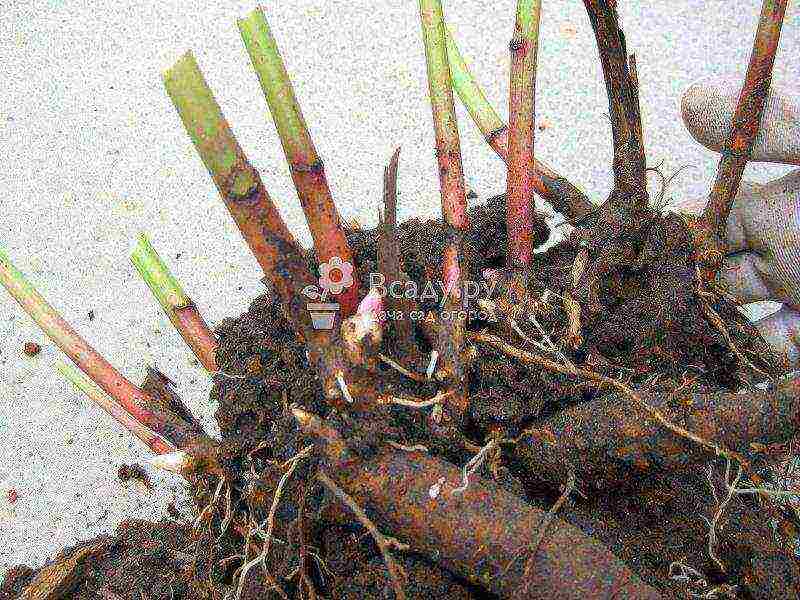 In autumn, the peony is completely cut off.
In autumn, the peony is completely cut off.
Preparing a peony for wintering
After the autumn pruning, the bushes must be covered for the winter with a layer of peat mulch, especially the young and transplanted plants this year. Adult bushes are not afraid of frost, and easily endure winter.
Outcome
Such a perennial as a peony is unpretentious in care. The most important procedure for growing is regular transplanting, which is convenient to combine with division for reproduction. The long-awaited beautiful flowering and longevity of the shrub fully justifies the time spent on growing peonies.
